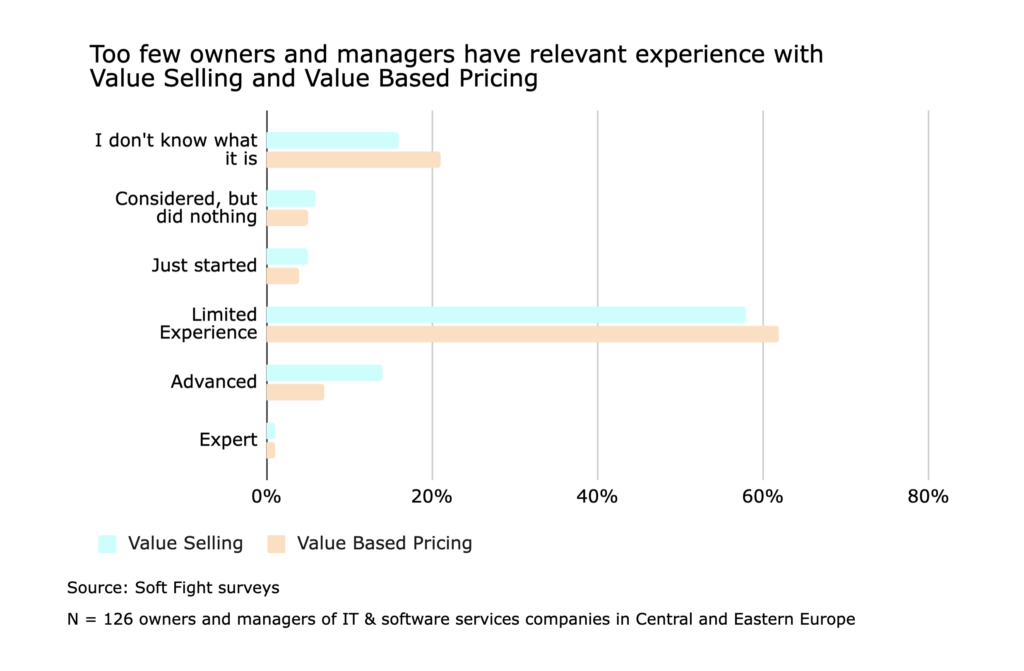Subscribe to
manu's just margins newsletter
Pricing. Strategy. Tradeoffs. For delivery and sales leaders navigating complexity in IT services.
I write ’cause I like the edge, not the stage.
Updates go out every Sunday at 08:30am CET.
#ITservices #pricing #JustMargins
Learn pricing, improve your profits
Healthy children and young people don’t even know they have it. But middle-aged adults eventually find out it matters. A lot. It enters conversations gradually. Before you know it, you buy a smartwatch to count your steps and track your heart rate even when you sleep. You think more about your heart muscle.
The same with pricing knowledge for IT & software companies. It is the muscle that keeps your business alive by pumping profits in the system. The sooner you learn about it and train it, the healthier your business will become.
To improve your organization’s pricing competencies, you could subscribe to my newsletter for a weekly dose of practical tips and recommendations. Here is why.
The industry is changing
Headlines in the tech world have been dominated by layoffs in the past two years. From big tech companies in the US, to global behemoths and European startups, it seems like every company in the industry is either letting people go or closing whole offices and departments. Services companies were equally affected, seeing their clients stop ongoing projects and reducing new investments significantly. Every company owner and manager I meet wants to talk about the pipeline. The sales pipeline. Everybody is looking for ways to get new leads, sign new customers and try to keep their teams busy.
The demand for IT and software has dried up just as the sector became more competitive and commoditised. Tens of thousands of new companies have been launched in the decade leading to 2021. It looked as if the good times would never end. But the services sector is currently going through a painful transition, triggered by the increase in interest rates and its effects on the allocation of capital in the broader tech industry.
Owners and managing directors of services companies find themselves paying much more attention to their profitability forecasts and reports. They are starting to realize there are some muscles in their bodies they didn’t know needed training. To survive and grow in this new environment, they need to spend more effort and resources on improving their teams’ sales and pricing skills.
Pricing is one of the fundamental vectors of profitability. In a 1992 article in the Harvard Business Review, titled “Managing Price, Gaining Profit”, Michael Marn and Robert Rosiello compared the impact on profit that can be achieved by improving different levers. By analyzing the economics of 2,463 different companies, they showed how a 1% increase in price leads to an 11.1% average increase in profits, compared with an increase of only 7.8, 3.3 and 2.3 from improving variable costs, sales volume and fixed costs, respectively.
Their conclusion: “The fastest and most effective way for a company to realize its maximum profit is to get its pricing right.”
Transition to selling value
Most IT & software companies operate in a competitive space, with low barriers to entry and few trade obstacles. This is not usually a recipe for a profitable business. Generic suppliers can work with clients based anywhere in the world; they can easily hire employees in other geographies; they can adopt new technologies in a matter of weeks. When a few can do this, many others can too. And they have. That is why most managers in software companies believe the market sets their prices. They feel they have little control. That is true, but only for companies selling time and hours, commodities with little added value.
Added value needs to be sold and priced accordingly. Value based pricing and value selling can help.
Many dismiss value based pricing as a gimmick. I’ve even seen some call it a scam. There is no universally acceptable definition. Let’s define it by saying what it isn’t. It’s not cost based pricing and it’s not competitor based pricing. Instead, you look at the value you create for customers and use that to set your prices.
Value selling requires taking the customer’s perspective into account at every step of the sales process. More than 53 percent of what drives B2B customer loyalty is the sales experience itself, according to research from 2011 from the Corporate Executive Board (CEB), a leading US-based research and advisory services firm. When it comes to buying technology products and services, business decision makers see little difference between vendors when it comes to brand, product, service and price. Yet they see a big difference in terms of the quality of the sales experience.
In the past three years I have asked this question to everyone I worked with from IT & software companies: “What is your knowledge of value selling and value based pricing?”. Judging from the answers I received, too few managers have relevant experience with value selling and value based pricing, as you can see in the chart below.
Starting healthy habits
When done regularly, physical activity strengthens your heart muscle. This improves your heart’s ability to pump blood to your lungs and throughout your body. As a result, more blood flows to your muscles, and oxygen levels in your blood rise.
A similar effect happens when you implement value selling and value based pricing. There are at least 8 practices that IT & software companies can adopt that will help improve profitability through better pricing.
- Document value for each customer segment
- Choose your pricing model with intent
- Discover customer needs with discipline in the sales process
- Quantify and use customer economic value
- Consider the fears & emotions that influence decision making
- Use sales templates for efficiency and effectiveness
- Gather quality data and information
- Strive for continuous pricing optimisation
This transition from selling time to selling value requires changes in mindsets, processes and tools.
It has been more than two years since I started writing weekly for a public audience. Over this period I have sent more than 135 issues to 1,300+ subscribers. Getting their feedback and seeing the impact on their sales and pricing knowledge, I can say hand over heart that you can learn pricing in five minutes per week by subscribing to this newsletter.


